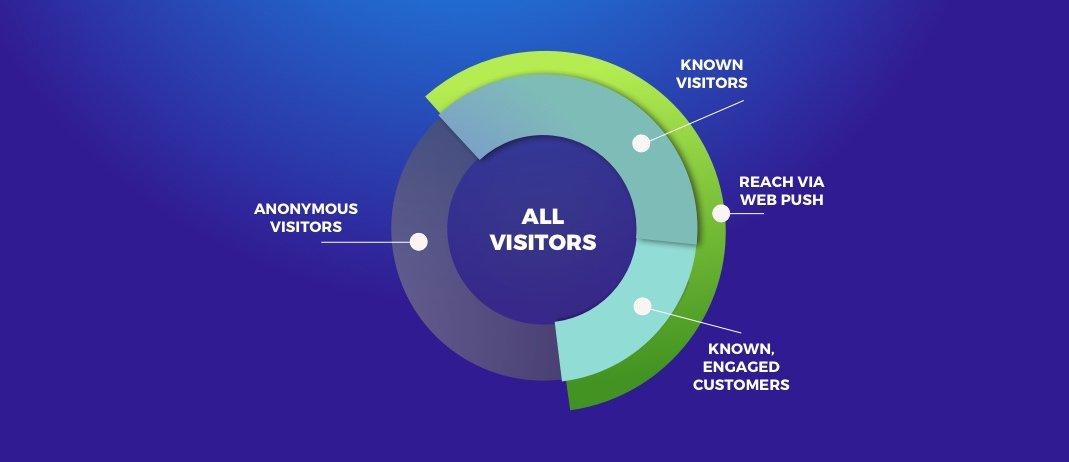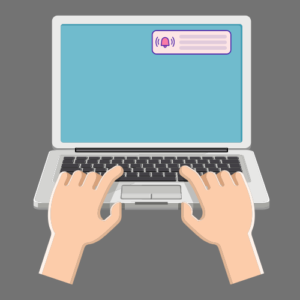In today’s e-commerce, online betting, and travel sectors (among others), personalised messaging and targeted offers are key to driving retail outcomes. In retail, for example, an entire 40 percent of consumers buy more from brands who personalise the shopping experience across channels.
But personalising the experience across channels requires knowing your user who’s behind the shopping experience.
Unfortunately, the majority of a retailer’s site visitors do not convert into known customers. A brand’s “anonymous” visitors – the individuals who visit a desktop or mobile site (or mobile app) without supplying any identifying information, or who browse as “guests” – make up between 57 percent and 98 percent of its audience.
A brand’s “anonymous” visitors … make up between 57 percent and 98 percent of its audience.
How can a brand get to know these ‘anonymous’ users? While a portion will always remain elusive, digital messaging, and more specifically,web push messaging, can help your business turn a larger percentage of your anonymous users into known, engaged customers.
Armed with data on an ‘anonymous’ customer’s interactions with a brand across all of its digital touch-points (including desktop website and mobile site or app), a brand’s marketing team can use that individual user’s preferences and behaviours to identify the right time to start opting in customers to receive browser push messaging.
Web push notifications involve a ‘soft opt-in’ approach that is less aggressive than the typical call-to-action signup techniques currently being used. This makes it a smart avenue for reaching those consumers who are less than eager to supply their personal identifying information.

Here are a few tactics for using customer data to opt-in customers to browser.
Seek Their Permission
Asking an anonymous visitor if they would like to receive information, through a pop-up screen, banner, or other digital interface before loading the ‘yes’ or ‘no’ native browser opt-in request can lead to higher browser opt-in rates.
Build a Personalised Message
If the anonymous visitor is searching for a specific item, or browsing certain categories, then he or she is more likely to respond favourably to an opt-in request when asked if he or she would like to receive further information about that particular product or category.
Encourage Them to Reveal More
Once opted in to receive web push messaging, your brand can invite the anonymous users (gently, of course) to further engage with your brand – whether by asking them to sign up for an email newsletter, download an app, or register for your loyalty program.
Convert Faster With Personalisation
Once the customer is engaged, the brand can deliver a more individualised messaging experience based on how the customers interact with messages on an individual level which in turn captures, data-driven preferences about timing, average order value, session lengths and more.
To learn more about engaging your anonymous visitors, contact OtherLevels.



